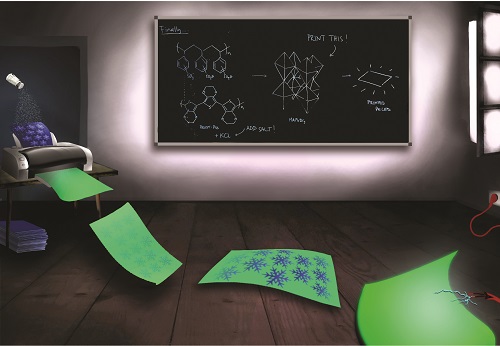A team of researchers from the Helmholtz-Zentrum Berlin (HZB) and Humboldt-Universität zu Berlin has succeeded for the first time in producing LEDs from a hybrid perovskite semiconductor material using inkjet printing. This opens the door to broad application of these materials in manufacturing many different kinds of electronic components. The scientists achieved the breakthrough with the help of a trick, which was called "inoculating" (or seeding) the surface with specific crystals.

(Image: Claudia Rothkirch/HU Berlin)
Scientists at HZB have already used the printing method with solar cells and now they adopted the approach for LED production. The research group used a metal halide perovskite, which promises particularly high efficiency for light emitting but difficult to process.
“Until now, it has not been possible to produce these kinds of semiconductor layers with sufficient quality from a liquid solution“, said List-Kratochvil. For example, LEDs could be printed just from organic semiconductors, but these provide only modest luminosity. “The challenge was how to cause the salt-like precursor that we printed onto the substrate to crystallize quickly and evenly by using some sort of an attractant or catalyst“, explains the scientist. The team chose a seed crystal for this purpose: a salt crystal that attaches itself to the substrate and triggers formation of a gridwork for the subsequent perovskite layers.
In this way, the researchers created printed LEDs that possess far higher luminosity and considerably better electrical properties than could be previously achieved using additive manufacturing processes. But for List-Kratochvil, this success is only an intermediate step on the road to future micro- and optoelectronics that he believes will be based exclusively on hybrid perovskite semiconductors. “The advantages offered by a single universally applicable class of materials and a single cost-effective and simple process for manufacturing any kind of component are striking“, says the scientist. He is therefore planning to eventually manufacture all important electronic components this way in the laboratories of HZB and HU Berlin.
The work was published in Materials Horizons, the journal of the Royal Society of Chemistry, ntitled “Finally, inkjet-printed metal-halide perovskite LEDs – utilizing seed-crystal templating of salty PEDOT:PSS.“





 CN
TW
EN
CN
TW
EN






